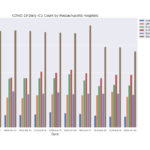
A new computer model that uses machine learning and de-identified and aggregated search and location data from logged-in Google users was significantly more accurate in identifying potentially unsafe restaurants when compared with existing methods of consumer complaints and routine inspections, according to new research led by Google and Harvard T.H. Chan School of Public Health. The findings indicate that the model can help identify lapses in food safety in near real time.
Harvard Gazette
To counter these shortcomings, Google researchers developed a machine-learned model and worked with Harvard to test it in Chicago and Las Vegas. The model works by first classifying search queries that can indicate foodborne illness, such as “stomach cramps” or “diarrhea.” The model then uses de-identified and aggregated location history data from the smartphones of people who have opted to save it, to determine which restaurants people searching those terms had recently visited
Harvard Gazette



